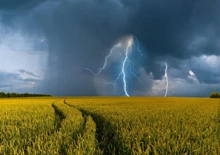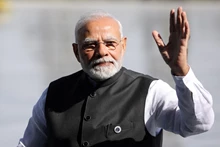
Following a surge in global energy prices, the government more than doubled the price of natural gas, which is used to generate electricity, make fertilizer, be converted into compressed natural gas (CNG), and be piped to household kitchens for cooking.
According to the oil ministry's Petroleum Planning and Analysis Cell (PPAC), the price of gas produced from old regulated fields, such as the nation's largest gas field of Bassein of ONGC, will rise to a record high of USD 6.10 per million British thermal unit (mmBtu) from the current USD 2.90 per mmBtu.
The new price, which is expected to result in an increase in CNG and piped cooking gas rates, will be in effect for six months beginning April 1. Petrol and diesel prices have risen nine times in the last ten days, totaling Rs 6.4 per litre, while cooking gas LPG prices have also risen by Rs 50 per cylinder. The latest gas price increase will exacerbate inflation.
The rate applicable to newer and more difficult fields, such as those of Reliance Industries Ltd in the deepsea KG-D6 block, will be USD 9.92 per mmBtu from April to September, up from the current rate of USD 6.13 per mmBtu, according to the PPAC notification.
The prices paid to Indian gas producers are the highest ever. Every six months, on April 1 and October 1 of each year, the government sets the price of gas based on rates prevalent in gas surplus countries such as the United States, Canada, and Russia.
According to industry sources, the increase in gas prices is likely to result in a 10-15% increase in CNG and piped cooking gas rates in cities such as Delhi and Mumbai.
According to Prashant Vasisht, Vice President and Co-Head, Corporate Ratings, ICRA Ltd: "Domestic gas prices rose as a result of a significant increase in gas prices at global gas hubs. The increase in gas prices provides relief to Indian upstream producers, as gas production was a loss-making proposition for most fields for Indian upstream producers at previous prices."
CNG and piped cooking gas supplies in cities are supplied by ONGC gas. The price increase will also raise the cost of generating electricity, but consumers may not notice a significant increase because gas accounts for a small portion of total power generation.
Similarly, the cost of producing fertilizer will rise, but because the crop nutrient is subsidized by the government, an increase in rates is unlikely. This is the second consecutive increase in prices and betters. ONGC and Oil India Ltd were paid USD 5.05 for old fields between November 2014 and March 2015, and USD 9.32 for newer fields between April and September 2019.
The new rates reflect a spike in global benchmark prices - US-based Henry Hub, Canada-based Alberta gas, UK-based NBP, and Russia gas - as well as rates of liquefied natural gas (LNG) in 2021 following a supply crunch with a return of demand following pandemic devastation.
Domestic rates are set based on the volume-weighted average price in these global benchmarks over a year, with a one-quarter lag. As a result, the price from April 1 to September 30 is based on the average price from January to December 2021. This is the time when global interest rates skyrocketed.
For difficult fields, such as deepwater, ultra-deepwater, and high pressure-high temperature discoveries, a slightly modified formula is used, which incorporates the price of LNG, which has also skyrocketed in 2021.
The KG fields operated by Reliance-bp are classified as difficult fields. These field operators are permitted to discover the market price, but this is subject to a cap set for difficult fields twice a year.
This will be the first time in six years that producers have received a remunerative price. ONGC began losing money on the 65 million standard cubic metres per day of gas it produces from domestic fields shortly after the government introduced a new gas pricing formula in November 2014, which had "inherent limitations" because it was based on pricing hubs of gas surplus nations.
According to the sources, ONGC stated in several communications to the government that the break-even price for producing gas from new discoveries is in the range of USD 5-9 per mmBtu, while the break-even price for old fields such as Mumbai High and Bassein is around USD 3.6-3.7 per mmBtu.
The Congress-led UPA approved a new pricing formula for implementation in 2014, which would have raised rates, but the BJP-led government scrapped it and introduced a new formula. With a one-quarter lag, the new formula considers the volume-weighted annual average of prices in Henry Hub (US), National Balancing Point (UK), Alberta (Canada), and Russia.
The rate was USD 5.05 per mmBtu at the first revision using the new formula, but it continued to fall in subsequent six-monthly reviews until it reached USD 2.48 per mmBtu for April 2017 to September 2017 period. Following that, it rose to USD 3.69 per mmBtu from April 2019 to September 2019, before falling to USD 1.79 per mmBtu in subsequent rounds.









